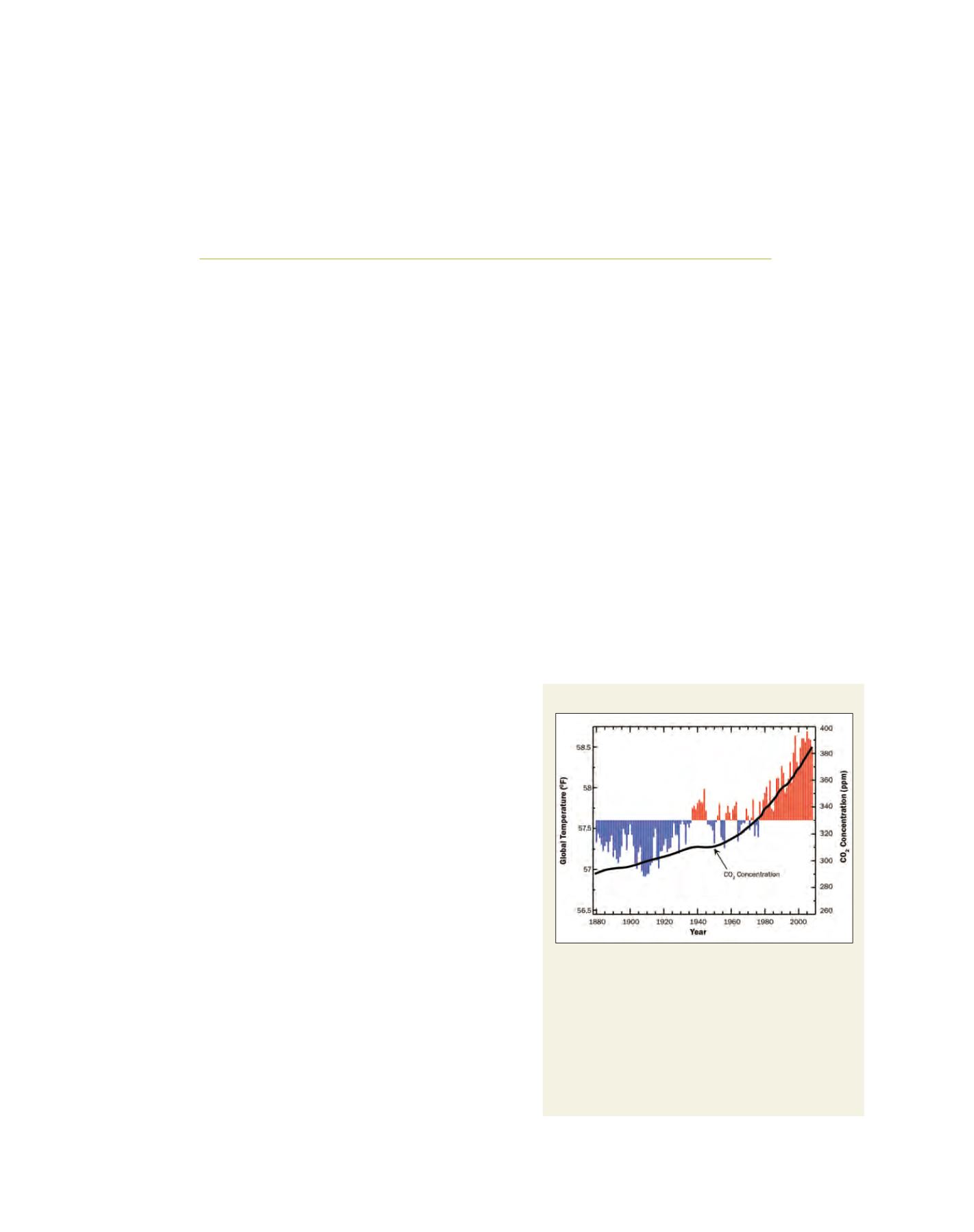

[
] 32
Economic and social implications of
climate change and variability:
new challenges for climate services
Thomas R. Karl, Lead, NOAA Climate Services; Chester J. Koblinsky, Director, NOAA Climate Program Office;
Richard D. Rosen, Senior Advisor for Climate Research, NOAA Climate Program Office
C
oncern about climate variability and change is now
part of the public consciousness and dialogue. This
new awareness of the global environment and human-
ity’s place in it can be attributed to at least two factors. First,
through the Fourth Assessment Report of the Intergovernmental
Panel on Climate Change (IPCC), a scientific consensus has
emerged that ‘warming of the climate system is unequivocal’
and, moreover, that ‘most of the observed increase in global
average temperature since the mid-20th century is very likely
due to the observed increase in anthropogenic greenhouse gas
concentrations’. Second, the world is experiencing profound
environmental changes, many linked to, or consistent with,
those which climate models predict on a warmer planet.
Notably: reductions in snow and sea ice extent, rising sea
levels, changes in ocean acidity, extended droughts, increased
frequency of heavy and extreme precipitation events, stronger
tropical storms, and unusually warm night-time temperatures.
Under these circumstances, it is not surprising to find a growing
demand for climate information across a broad spectrum of sectors
and regions. Fishermen and fishery managers want to know the
impacts of a warming and more acidic ocean on their stocks; city
planners, the possible range of future weather and climate extremes
to inform infrastructure design for their growing populations;
public health officials, the potential for a new climate regime more
favourable for environments that support pathogens and agents of
infectious disease; coastal emergency management officials, what
to expect about extreme events and rising sea levels associated with
inundation and flooding; Arctic populations, how warming will
continue to be amplified in polar regions, affecting their culture
and livelihoods – the list goes on.
This demand coincides with advances in climate science that
make the possibility of providing useful answers feasible. Global
observing networks made possible the first IPCC conclusion, and
international climate modelling capabilities enabled the second. New
high-performance computing capacity and increased understanding
of the climate system offer the potential to predict climate evolution
over the next several decades at spatial resolutions relevant to deci-
sion and policy makers. While such advances hold exciting promise,
observation and modelling systems remain fragile, too often lacking
sustained oversight and commitment. An ‘end-to-end’ approach that
recognizes the interdependencies of climate-related physical, chemi-
cal, and biological processes with human and natural
systems remains underdeveloped. This is required to
properly conduct climate vulnerability assessments and
risk management to support climate resilient communi-
ties. Internationally, recognition of these gaps has led
to the call for a Global Framework for Climate Services
at World Climate Conference-3. Nationally, within
the United States (US), this recognition is at the heart
of discussions on forming a National Climate Service
(NCS).
An agenda for climate services
Sustaining climate observations and state-of-the-art
modelling capabilities are but elements of a broader
T
he
I
mpacts
and
I
mplications
of
C
limate
C
hange
and
V
ariability
Global annual average temperature
Red bars indicate temperatures above and blue bars
indicate temperatures below the average temperature for the
period 1901-2000. The black line shows atmospheric CO
2
concentration in parts per million (ppm). While there is a clear
long-term global warming trend, each individual year does not
show a temperature increase relative to the previous, and
some show greater changes than others. These fluctuations in
temperature are due to natural processes, like the effects of El
Niños and the eruption of large volcanoes
Source: Karl et al. (2009)
















